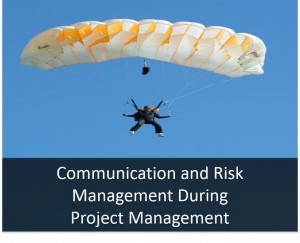Being prepared for all eventualities throughout the lifecycle of a project is the greatest aid to the project’s success. Without prior planning for associated risks, the project is more likely to be under-costed, or under-budgeted for time. It is essential, therefore, that the project manager factor in extensive risk management considerations during the project planning phase.
How to learn lessons from a communications perspective
The first part of this risk management planning is to successfully communicate and consult with stakeholders. During the communication planning phase of the project, the project manager will have analysed how best to communicate with stakeholders. This analysis should include asking questions such as:
- What improvements could be made to communications planning and the integration of communication into other aspects of project management?
- Was the analysis of stakeholders completed in sufficient detail and used effectively to benefit the project?
- Did the communications provided meet stakeholder expectations?
- Were project communications processes updated to reflect lessons learned throughout the project?
With lessons learned put into action, the project manager will them be able to apply risk management techniques which will identify and prioritise risks in the planning stage before the project gets under way.
4 steps to plan for and manage project risks
By consulting with stakeholders, the project manager will want to establish four bullet points of risk management:
- Establish the risk context
Is the risk internal or external?
Internal risks are those that are caused by decisions taken both internally and externally, the use of resources, and the aims of both the project, client, and project team.
External risks are those that the project team and client cannot control. Typically these will be environmental, regulatory, and market orientated.
- Identify risks
Now identify specific risks. This may be achieved in conjunction with the project management plan, during the creation of which the project manager will need to consult with the client and project and task teams. Once potential areas of risk and specific risks have been identified, they can then be analysed.
- Analyse risks
At this stage, the project manager and their team seeks to understand the nature of each risk. How will that risk affect other project tasks? When will this effect take place, and what knock-on effects is it likely to have?
At the detailed level, this risk analysis may cover costs, project timings, and even project quality issues. This analysis will also allow the project manager to simulate the probabilities of finishing the project within cost at a given date.
- Evaluate risks
While it may be tempting to treat all risks equally, clearly they are not equal in possible impact to outcomes. Evaluation of risks is the determination of each individual risk’s impact on the project as a whole, and the prioritisation of risk mitigation. A showstopper must be given maximum priority.
In conclusion
The project manager must prioritise risk management. It is, perhaps, the most essential part effective project management. By working with all stakeholders, all risks and their impacts can be fully assessed in the planning stage, which will then allow the project manager to execute a purposeful risk management plan.


